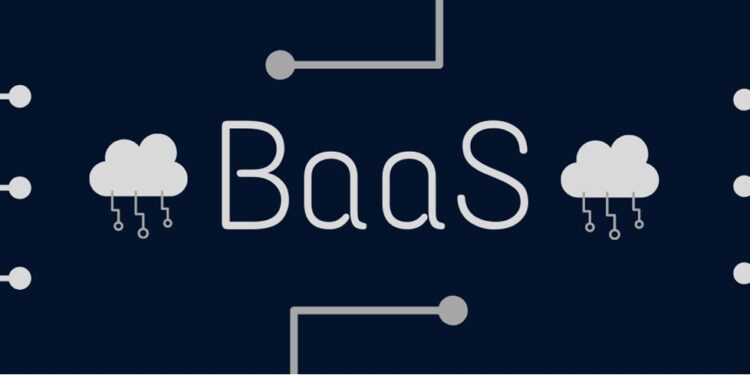The most recent trend in the tech world nowadays is the mobile application development. With some huge app stores owned by the giants like Apple, Google and Microsoft, more and more apps are being developed and added to these stores everyday by the developers from all over the world. Within this genre, a new concept has been introduced that is being termed as ‘Backend as a Service’ (BaaS) or Mobile Backend as a Service (MBaaS). Different BaaS providers have emerged in the recent times to meet the demand for the development and deployment of apps along with complete management of apps life-cycle.
What is BaaS?
Before moving on further, we should know what actually BaaS is. Backend as a Service or BaaS is an approach to offer a technique to mobile and web app developers enabling them to get their applications connected with backend cloud storage and processing. It also offers general features like push notifications, user management, social media integration and some other features that are currently being demanded by the mobile users of today.
How BaaS is Offered?
BaaS is provided to the mobile app developers by means of software development kits (SDK) and application programming interfaces (APIs). It is a pretty new inclusion in the cloud computing world as majority of the BaaS providers came forward in 2011 or later. According to a report by the research firm ‘MarketsandMarkets’, it is estimated that the international market for BaaS will grow from $216.5 million in 2012 to $7.7 billion in 2017.
BaaS Differs From IaaS and PaaS – But How?
The concept of BaaS has emerged from the growing hassle because of deployment issues with IaaS platforms for the purpose of constructing a single new mobile app. Another fact associated with it is that the traditional PaaS offerings could not succeed in meeting the requirements of mobile developers. This called for the need of a service that can simplify the complexities involved in building and managing your personal infrastructure. This need or gap was filled with the advent of BaaS. It offers all such useful resources required by the developers to come up with the next generation of mobile apps.
Similar to PaaS, the aim of BaaS is to boost the speed of app development process. However, BaaS is solely a backend service that offers an infrastructure with the capability of automatic scaling and optimizing. It comes with a number of essential resources that are required by developers, including data, content, messaging tools and some renowned third party services driven by API like Twitter, Facebook and Dropbox.
Advantages of BaaS
BaaS has made the lives of app developers much simpler and easier. It has filled the gap between useful resources required for quick and top quality mobile apps and the developers. BaaS offers multiple benefits to its users that are discussed below.
Improved Efficiency
BaaS helps in reducing all kinds of overheads associated with mobile app development that ultimately lead to improved efficiency in all phases of app development.
Quicker addition to the app market
The total time between the generation of an idea and its execution in the form of a complete mobile app is reduced with the help of BaaS. This means that BaaS enables the developers to come up with a new app in the shortest possible time.
Fewer resources required
BaaS enables developers to build mobile apps with fewer resources but at the same time without compromising on the quality of the app.
Mobile and Tablets Optimization
A lot of effort including resources and time has been put in by the BaaS providers to optimize the data and network for mobile and tablet apps along with the reduction in fragmentation issues across various devices and platforms.
Secure and Scalable Infrastructure
A bundled infrastructure is provided by BaaS that offers security, scalability, high performance and some other operational features that allow developers to put in their best efforts.
Stack of Common API resources
BaaS gathers some famous third party API resources and present them to the developers in the form of a single stack. This removes the need of collecting these resources individually.
Multiple uses of BaaS
BaaS is not only restricted to mobile app development but the concept can be easily applied over different areas of development. Let’s have a look at what can you build with BaaS:
Web Development
As BaaS is more towards development of mobile apps, it offers a far more flexible approach to the web applications development. It provides all the opportunity of PaaS, with less interface restrictions, just a meaningful stack of resources to build variety of web apps.
Mobile Apps
The main aim behind designing BaaS is the development of mobile apps. For this reason, all BaaS providers focus on data optimization for mobile and gathering essential resources at one place like places, social, geo-location and other vital elements of mobile apps.
Readers
BaaS allows you to publish on such devices that are designed with an aim to support the magazine and book publishing world. The emerging devices like Nook, Kindle and other education or healthcare specific devices are being driven by BaaS.
Launch APIs
BaaS platforms offer an easier way to deploy API frameworks as part of their object and data stores. It also offers a rapid way to launch APIs and other infrastructure around data and resources, for the purpose of making it available to web or mobile developers.
Final Words
With the advent of BaaS in the tech world, we can justly say that it has made the lives of the app developers very much easier. The app development process has been drastically improved and simplified. The reason behind frequent addition of apps in different app stores is the convenience and simplicity offered to the developers by BaaS enabling them to develop more and more apps in a very quicker time. Now we just have to wait to witness how this technology evolves over the time.



